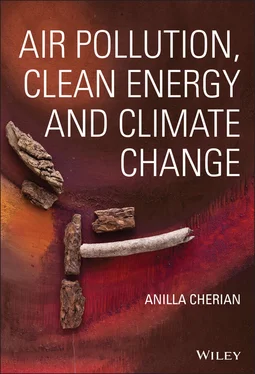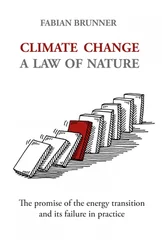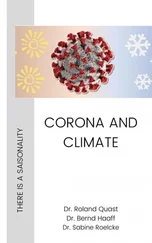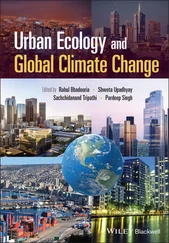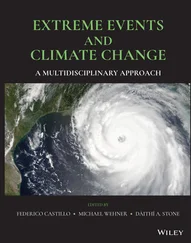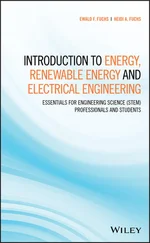Anilla Cherian - Air Pollution, Clean Energy and Climate Change
Здесь есть возможность читать онлайн «Anilla Cherian - Air Pollution, Clean Energy and Climate Change» — ознакомительный отрывок электронной книги совершенно бесплатно, а после прочтения отрывка купить полную версию. В некоторых случаях можно слушать аудио, скачать через торрент в формате fb2 и присутствует краткое содержание. Жанр: unrecognised, на английском языке. Описание произведения, (предисловие) а так же отзывы посетителей доступны на портале библиотеки ЛибКат.
- Название:Air Pollution, Clean Energy and Climate Change
- Автор:
- Жанр:
- Год:неизвестен
- ISBN:нет данных
- Рейтинг книги:5 / 5. Голосов: 1
-
Избранное:Добавить в избранное
- Отзывы:
-
Ваша оценка:
- 100
- 1
- 2
- 3
- 4
- 5
Air Pollution, Clean Energy and Climate Change: краткое содержание, описание и аннотация
Предлагаем к чтению аннотацию, описание, краткое содержание или предисловие (зависит от того, что написал сам автор книги «Air Pollution, Clean Energy and Climate Change»). Если вы не нашли необходимую информацию о книге — напишите в комментариях, мы постараемся отыскать её.
to leave no one behind
Air Pollution, Clean Energy and Climate Change
Energy and Global Climate Change
Air Pollution, Clean Energy and Climate Change — читать онлайн ознакомительный отрывок
Ниже представлен текст книги, разбитый по страницам. Система сохранения места последней прочитанной страницы, позволяет с удобством читать онлайн бесплатно книгу «Air Pollution, Clean Energy and Climate Change», без необходимости каждый раз заново искать на чём Вы остановились. Поставьте закладку, и сможете в любой момент перейти на страницу, на которой закончили чтение.
Интервал:
Закладка:
The main argument advanced is that addressing the nexus between curbing SLCPs and increasing access to clean energy for the poor does, in fact, require integrated and innovative partnerships that look beyond nation‐state‐driven intergovernmental outcomes and existing policy silos on clean energy, pollution and poverty reduction and climate action. While it is undeniable that national governments – sovereign UN member states – have typically set the rules and frameworks for climate and clean energy, it is also clear that innovative action has not waited for the fractured pace of intergovernmental negotiations. The annual pilgrimages of climate cognoscenti have not resulted in verifiable improvements in the lives of those who lack access to clean energy and are exposed to toxic levels of PM air pollution. Here, it is also useful to ask why the UN’s one and only successfully implemented regional air pollution protocol – the Convention on Long‐range Transboundary Air Pollution (CLRTAP) – focuses only on Europe?
Regulatory efforts to curb air pollution have been and remain highly effective within the context of advanced industrialized countries, particularly in Europe. But there is a glaring absence of regional regulatory agreements aimed at reducing emissions of air pollutants within developing countries where the problem of energy related air pollution and lack of access to clean energy happens to be most pervasive. According to UNEP/WMO (2011), BC, which exists as particles in the atmosphere and is a major component of soot, has been demonstrated to be an SLCP. Both BC and O 3are air pollutants harmful to human health, ecosystems and agriculture/food security. BC emissions result from the incomplete combustion of fossil fuels, wood and other biomass, and its negative impacts are felt by poor households that lack access to clean energy while O 3is the third most important GHG contributor after carbon dioxide and methane. The UN’s 1979 CLRTAP, which includes the Gothenburg Protocol (established in 1999), sets legally binding emission reductions commitments for 2020 and beyond for all major air pollutants shown to damage human health including sulphur dioxide (SO 2), nitrogen oxides (NOx), ammonia (NH 3), volatile organic compounds (VOCs) and fine particulate matter (PM 2.5). Administered by the UN’s European Commission on Europe (UNECE), the 7 October 2019 entry into force of the amended Protocol makes it the first ever binding agreement to target emission reduction of PM 2.5, which happens to be both an SLCP and a predominant public health concern for polluted cities and megacities across the world.
The 40‐year history of implementing CLRTAP and its protocols has been hailed as achievements that are ‘unparalleled’, and include the decoupling emissions and economic growth, cutting back certain air pollutants by 40–80%, recovering forest soils from acidification and avoiding some 600,000 premature deaths per year (UN News 2019b). But, there is a major global and regional disconnect in terms of addressing the linkages between air pollution and urban ill health for the rest of the world. The problem of PM air pollution impacts current and future generations living in developing countries of Asia and Africa at a scale vastly different from that experienced in Europe which successfully implemented one of the UN’s only regional air pollution protocols – the CLRTAP. The problem that needs to be addressed is that there are no similar regional protocols on air pollution that cover other regions of the world including South Asia where the scope and scale of the problem of air pollution is urgent, massive and brought to the fore by COVID related respiratory burdens of disease and death. The intrinsically linked PM air pollution and climate crises in countries like India – the third largest aggregate CO 2emitter but the 21st per capita CO 2emitter – is such that depending on the tenuous, incremental intergovernmental consensus‐driven outcomes can no longer suffice. The immediate sections provide context as to why the world’s largest environmental health risk – air pollution – intersects with access to clean energy for the poor and focuses on the need for integrated, localized NNSA inclusive action on air pollution, clean energy and climate actions.
1.3 Mapping the Scope of the World’s Largest Environmental Health Risk: Why Curbing Particulate Matter Air Pollution Matters for Millions of Lives
Poverty and socio‐economic marginalization have been evidenced as putting women, children and the elderly in a seriously disadvantaged position in terms of coping with adverse impacts of climate change (UNDP 2007; World Bank 2016). Back in 2014, the Fifth Assessment Report (AR5) of the IPCC identified three pathways by which climate change impacts on human health:
‘(1)Direct impacts, which relate primarily to changes in the frequency of extreme weather including heat, drought, and heavy rain;
(2)Effects mediated through natural systems, for example, disease vectors, water‐borne diseases, and air pollution; and
(3)Effects heavily mediated by human systems, for example, occupational impacts, undernutrition, and mental stress’ (IPCC 2014a, p. 716).
The IPCC finding that the health effects of climate change impact differentially and negatively on the global poor, including in the case of health risks associated with air pollution is categorically clear: ‘Climate change is an impediment to continued health improvements in many parts of the world. If economic growth does not benefit the poor, the health effects of climate change will be exacerbated. In addition to their implications for climate change, essentially all the important climate‐altering pollutants other than carbon dioxide (CO2) have near‐term health implications (very high confidence). In 2010, more than 7% of the global burden of disease was due to inhalation of these air pollutants (high confidence)’ (emphasis added, IPCC 2014a, p. 713). As referenced by AR5: ‘Put into terms of disability‐adjusted life years (DALYs), particle air pollution was responsible for about 190 million lost DALYs in 2010, or about 7.6% of all DALYs lost. This burden puts particle air pollution among the largest risk factors globally , far higher than any other environmental risk and rivaling or exceeding all of the five dozen risk factors examined , including malnutrition, smoking, high blood pressure, and alcohol’ (emphasis added, IPCC 2014a, p. 728).
The largest concentrations of the ‘energy poor’ (that is, people who are both poor and lack access to sustainable modern forms of energy) are currently in Sub‐Saharan Africa and South Asia where the direct use of solid biomass has been well‐documented to be widespread (Energy Policy: Srivastava et al. 2012). HAP resulting from the burning of solid fuels (wood, crop wastes, charcoal, coal and dung) imposes natural resource constraints and destroys the lives of women and children who spend more time in front of polluted hearths (Gordon et al. 2014). Heavy reliance on solid fuel use has been associated with acute lower respiratory infections, COPD, lung cancer and other illnesses at the household level, and burning biomass also impacts on local environments by contributing to deforestation and outdoor air pollution. Quaderi and Hurst’s summary findings and conclusions in ‘The Unmet Burden of COPD’ (2018) regarding COPD’s ‘under‐recognition and inequities’ being particularly grave for low and middle‐income countries is highlighted in Box 1.3. The authors pointed out that: ‘Those who have never smoked tobacco can still get COPD – think ‘biomass COPD’ and find that peak levels of PM 10in biomass‐using homes can be as high as 10,000 μg/m 3, 200 times more than the standard in high‐income countries. PM 2.5are finer particles which penetrate deep into the lung and have the greatest health‐damaging potential” (Quaderi and Hurst 2018, p.2).
Читать дальшеИнтервал:
Закладка:
Похожие книги на «Air Pollution, Clean Energy and Climate Change»
Представляем Вашему вниманию похожие книги на «Air Pollution, Clean Energy and Climate Change» списком для выбора. Мы отобрали схожую по названию и смыслу литературу в надежде предоставить читателям больше вариантов отыскать новые, интересные, ещё непрочитанные произведения.
Обсуждение, отзывы о книге «Air Pollution, Clean Energy and Climate Change» и просто собственные мнения читателей. Оставьте ваши комментарии, напишите, что Вы думаете о произведении, его смысле или главных героях. Укажите что конкретно понравилось, а что нет, и почему Вы так считаете.
